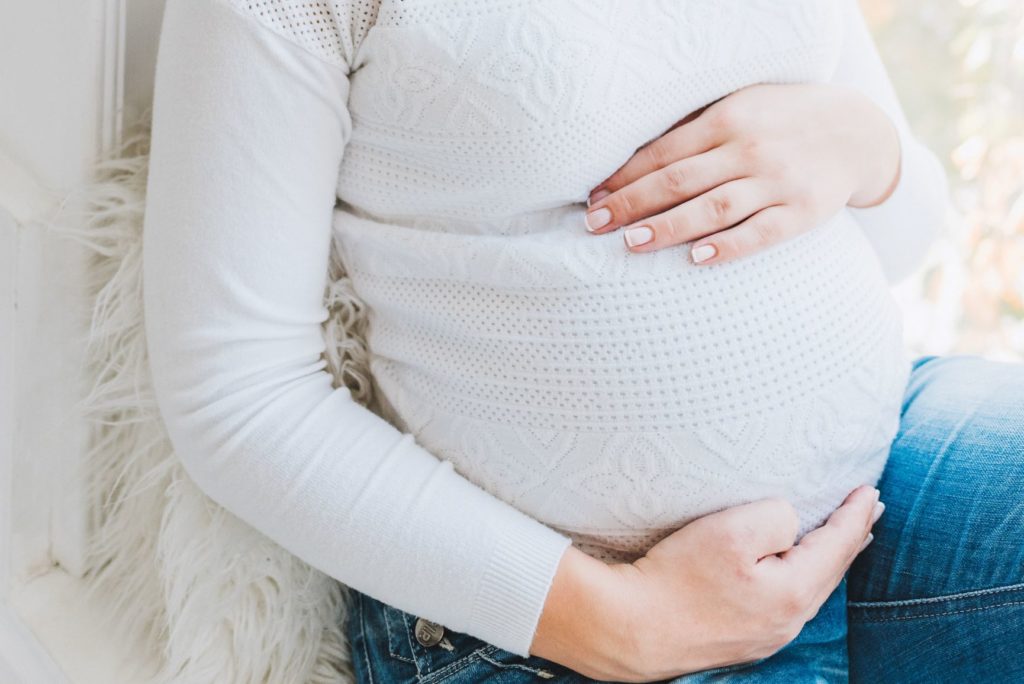
Welcome to our pregnancy dictionary – a valuable resource for soon-to-be parents. Dive into the world of pregnancy with our comprehensive guide, where you’ll find clear, concise definitions for all the terms and jargon related to this exciting journey. Get answers to your questions, and gain a deeper understanding of the miraculous process of bringing a new life into the world.
Explore our pregnancy dictionary and make informed decisions every step of the way.
Start by searching by the first letter of the word
- Afterpain: The contractions felt by a breastfeeding mother.
- Amniocentesis: A prenatal test in which fluid is taken from the amniotic sac for analysis.
- Amniotic sac: A sac inside your uterus, where your baby stays. It’s filled with a liquid called amniotic fluid. The amniotic sac breaks before a baby is born, and the amniotic fluid comes out.
- Anaemia: When the amount of red blood cells or haemoglobin (the substance in the blood that carries oxygen to organs) becomes reduced, causing fatigue that can be severe.
- Anaesthesia: Drugs meant to cause loss of feeling. Local anaesthetic makes a part of your body numb, while general anaesthetics will put you to sleep.
- Antenatal: The period during pregnancy, before birth.
- APGAR score: A method to assess the health of a newborn immediately after birth. The test is done at 1 and 5 minutes after the baby is out. If the score is low, the test will be repeated later. In terms of scores, below 3 is considered as critically low, 4-7 is fairly low, and over 7 is normal. A score under 7 at 1 minute of testing might mean the baby requires attention, but it’s not necessarily an indication of long-term problems, especially if there is an improvement at the 5-minute test.
- Areola: The dark-coloured skin on the breast that surrounds the nipple.
- Baby blues: A feeling of sadness that happens usually in the first 2 weeks after giving birth. It’s absolutely normal and it usually passes quite fast. Check with your doctor if it lasts longer.
- Babymoon: A holiday taken before the baby is born, meant to provide a bit of closeness to the partners before the baby is born.
- Baby shower: A special party thrown to celebrate the upcoming birth of your child. Usually thrown by your friends and where you will receive presents.
- Birth canal: The passage inside you through which your baby will pass during a vaginal birth. It includes the cervix.
- Bloody show: A combination of mucus and blood that passes through your cervix and announces the start of labour.
- Braxton Hicks Contractions: These contractions usually occur in late pregnancy, as preparation for labour. Not all women feel them, but if you do, you might feel your uterus tightening briefly. If you are unsure whether you are having real contractions or Braxton Hicks, we strongly advise you to check with your midwife.
- Breastfeeding: Feeding your baby milk from your breast.
- Breech: Your unborn baby is lying bottom down in the womb.
- Cesarean section (C-section): A surgery where the doctors make a cut on your lower abdomen to take the baby out. The C-section is usually performed under partial anaesthesia.
- Cephalopelvic disproportion: Is a birth complication where the head is too large for the pelvis.
- Cephalic: Your baby is lying head down in the womb.
- Cleft lip and palate: This is a gap or split in the upper lip and/or roof of the mouth (palate). It is present from birth and is considered a birth abnormality.
- Colostrum: Your first breast milk and the most nutritious. Usually thick and of a yellowish colour is secreted in the first days of your baby’s birth.
- Conception: The moment when you become pregnant – it occurs when your egg is fertilized.
- Contractions: During labour and childbirth, when your womb muscles tighten and then relax.
- Cord prolapse: If the umbilical cord comes out of the uterus while the baby is still inside. It is very dangerous and can put the baby\’s life at risk.
- Delivery: The process of giving birth to a baby.
- Dilation: The opening of the cervix during childbirth.
- Doula: An assistant, non-medical, who is hired to provide support during your pregnancy, childbirth and the postpartum period.
- Down syndrome: Also known as Trisomy 21, is a genetic disorder causing physical growth delays, intellectual disability, and characteristic facial features.
- Due date: This is the date when your baby is expected to be born. The estimated date is usually calculated as 40 weeks from the day of your last period.
- Eclampsia: Eclampsia is a complication of preeclampsia and high blood pressure results in seizures during pregnancy.
- Ectopic pregnancy: A pregnancy outside the uterus. This happens when a fertilized egg settles and grows in a place other than the inner lining of the uterus.
- Effacement: The thinning of the cervix before or during early labour.
- Embryo: A baby in its early development phase, between 2 and 8 weeks of pregnancy.
- Engorgement: A condition in which breasts are overfilled with milk and can feel swollen and painful.
- Epidural: A type of strong anaesthesia used to relieve pain during delivery.
- Episiotomy: A surgical cut made in the perineum (the area between the vagina and the anus) to make the vaginal opening larger in order to prevent the area from tearing during childbirth.
- Fetal Alcohol Syndrome: Also known as FAS is a serious condition caused by drinking during pregnancy. It can cause permanent damage to the baby such as abnormal facial features, growth deficiencies and central nervous system problems.
- Fetal distress: This happens when the baby shows signs of stress (most common being a decreased heart rate) during labour.
- Fraternal twin: When 2 eggs are fertilized by 2 different sperm cells and implanted in the uterus. The twins will each have their own placenta and amniotic sac.
- Foetus (fetus): Also known as a fetus, represents the baby after the 8th week of pregnancy until birth.
- Forceps: A medical instrument used to assist a vaginal delivery by pulling the baby out by its head.
- Full-term birth: This means a pregnancy that lasts until 40 weeks.
- Gestation: Also known as pregnancy, is the time in which the baby develops inside its mother’s womb.
- Gestational age: The age of an embryo/fetus from the first day of the woman’s last menstrual period to the current date.
- Gestational diabetes: A condition that develops during pregnancy where blood sugar is high. It can cause preterm labour and other serious complications.
- Haemorrhoids: The swelling and inflammation of the veins surrounding the anus.
- High blood pressure: Also known as hypertension, is considered high when over 140/90.
- Human chorionic gonadotropin: Also known as hCG is a hormone produced in pregnancy. Pregnancy tests measure the levels of hCG to determine the presence of an implanted embryo.
- Hyperemesis: A severe form of morning sickness.
- Identical twin: When a single egg is fertilized, but then divides into 2 separate embryos. Both babies will share the placenta and the amniotic sac.
- Induction of labour: This happens when a doctor starts labour in a pregnant woman by using artificial means. This is done either by giving chemicals such as Pitocin or by manually breaking the amniotic sac.
- Incompetent cervix: When a cervix starts dilating and effacing before term.
- In-vitro fertilization: Also known as IVF, is a way that a woman can become pregnant without having sexual intercourse with a man. Sperm and eggs are taken from the parents and combined in a glass container. After, the combination is put inside the mother’s uterus.
- Jaundice: When the newborn’s skin turns yellow. It happens when Bilirubin builds up in the baby’s blood, and if left untreated it can cause brain damage.
- Kegels: A series of physical exercises meant to strengthen the pelvic muscles.
- Labour: When a woman goes into labour it means that her body is ready to give birth. It means the culmination of pregnancy with delivery.
- Large for gestational age: A baby with a weight over the 90th percentile, which is considered too big for that specific gestational age.
- Linea nigra: The dark, vertical line that appears on the abdomen during pregnancy. It usually disappears soon after birth.
- Lochia: A vaginal discharge containing blood, mucous, and placenta, that starts soon after giving birth and continues for 4 to 6 weeks.
- Maternity: The period during pregnancy and shortly after childbirth.
- Maternity leave: The time before and after the birth of a baby when a woman is legally allowed to be away from her job.
- Meconium: This is the first stool of a newborn baby. It is made of what they ingested in the uterus.
- Midwife: A medical nurse who takes care of pregnant women during their pregnancy.
- Miscarriage: When an embryo or foetus dies inside the womb, before 20 weeks of pregnancy.
- Morning sickness: Nausea and vomiting in pregnancy, usually happening in 90% of women between 4 and 16 weeks of pregnancy.
- Natural birth: Also called a normal birth is a birth where: labour starts spontaneously, it progresses without drugs or assistance and no forceps/ventouse is used.
- Neonatal: The first 28 days of your baby’s life.
- Nesting: Nesting is a sudden urge to get your house ready for your baby’s arrival, by cleaning and organising. Similar to the urge birds get, is meant to provide protection against predators. It usually happens a few weeks before the due date.
- Neural tube defect: This is a birth defect of the brain, spine, or spinal cord. It usually happens in the first month of pregnancy. The two most common neural tube defects are spina bifida and anencephaly.
- Nuchal translucency: Nuchal translucency (NT) is the collection of fluid at the back of your baby’s neck. Usually measured at your 12-week scan, as part of the tests for Down’s Syndrome, to detect any chromosomal abnormalities.
- Obstetrician: A doctor who specialises in caring for pregnant women and their babies.
- Overdue: When a baby is overdue it means they have not been born by the date on which they were expected.
- Ovulation: It happens when the ovaries release an egg as part of the menstrual cycle.
- Perinatal: Relates to the time just before and just after the birth of a baby.
- Placenta: Is an organ inside of the uterus, meant to supply nourishment to the growing baby. The placenta and the baby are connected by the umbilical cord.
- Placenta previa: The implantation of the placenta over or very near the cervix. If it doesn’t move until close to the due date, a vaginal delivery will not be possible.
- Pre-eclampsia: This is a pregnancy-induced disease that can cause harm to your baby. Usually characterised by high blood pressure and protein in the urine.
- Premature rupture of membranes: Also known as PROM, is a condition where the amniotic sac ruptures before the onset of labour. PPROM (Preterm premature rupture of membranes) happens before 37 weeks of pregnancy.
- Quickening: This is the initial motion of the fetus in the womb felt by a pregnant woman. It might feel like the fluttering of a butterfly or like a muscle twitch.
- Small for gestational age: Also known as SGA, is when a baby measures in the 10th percentile for his gestational age.
- Stillbirth: When the baby is born dead.
- Spina bifida: This is a birth defect where the spine doesn’t develop properly. It occurs very early in pregnancy and it is usually discovered during the 20-week scan.
- Stretch marks: Streaks (scars) in the skin caused by the stretching of it. They usually appear in the second half of pregnancy and can be red, pink or purple.
- Sudden infant death syndrome (SIDS): Also known as SIDS, it means the sudden death of an infant under one year of age that remains unexplained after a complete investigation. Most cases occur when the baby is sleeping in a crib and between 1 and 4 months of age.
- Toxoplasmosis: This is a common infection caused by a parasite that can invade tissues and damage the brain, especially in a foetus and a newborn baby. You can catch it from dealing with cat poop, or by eating undercooked meat.
- Trimesters: A pregnancy is made of 3 trimesters, approximately 3 months each. The first trimester includes the first symptoms, morning sickness, tiredness and headaches. The second trimester is when you usually start to show and feel your baby move. The third and last trimester is the preparation for childbirth and the arrival of your baby.
- Trisomy 18: Also known as Edwards’ syndrome, is a rare genetic condition in which a baby is conceived with three copies instead of the normal two copies of chromosome #18. Children with this condition have a wide range of severe medical problems, including severe mental retardation. Sadly, most babies with Edwards’ syndrome will die before or shortly after birth.
- Tubal pregnancy: This is a complication of pregnancy in which the fertilised egg implants itself in the Fallopian tube.
- Ultrasound: This is a type of test that uses sound waves to show pictures of your baby inside the uterus (womb). If you are pregnant in the UK you will be offered at least 2 ultrasounds, one at 12 weeks and one at 20 weeks.
- Umbilical cord: The umbilical cord is a long tube that connects the baby to the placenta, inside the womb. It carries nutrients and oxygen to the baby and removes the baby’s waste.
- Uterus: The uterus is the woman’s womb, an organ located in the lower abdomen.



